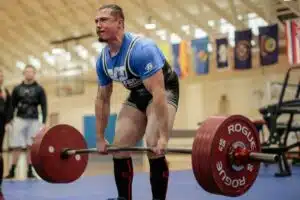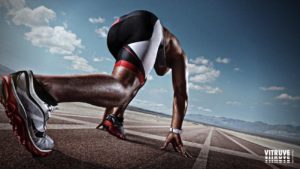What is strength training
Strength training and its impact on so-called performance in endurance sports have long been controversial. The training of maximum strength and explosive force allows the same exercise to be achieved more times or to increase the maximum weight that can be obtained in a single exercise. In this sense, strength training is usually classified according to weights related to the maximum number of repetitions (RM), and can be done with weights that allow you to perform a single repetition (1RM) or allow you to perform more repetitions. (For example, 12 RM). The repetition performed will always be inversely proportional to the percentage of moving MRI. Therefore, when we perform 3 repetitions, we may move a weight very close to 1RM (90-95% of 1RM), and if we perform 10 repetitions, we may move to 70-80% of 1RM.
The resistance
Once some concepts related to muscle strength have been clarified, we must emphasize that resistance is a “part” of the expression of strength. When we can maintain a high running speed, such as 3:00 minutes/km, we will exert a lot of force on the muscles so that we can maintain this strength for a long time. Therefore, it can be said that resistance is another form of power. For many years, people have believed that the way to improve endurance exercise is through aerobic training. When we talk about endurance exercise, the most relevant parameter is the maximum amount of oxygen (Vo2Max), because it indicates our physical ability to mobilize oxygen to the muscles. The higher our Vo2Max, the better our endurance athletes. In this sense, one of the best endurance athletes like Killian Jornet needs a total of 90 milliliters of oxygen per kilogram of body weight per minute, which implies that the Spanish athlete Alberto Contador seems to be close to 89 milliliters/ Kg/min. This is why most endurance athletes seek to increase this value. For decades, the method that has been used is continuous training with an objective intensity of 70-80% of the maximum Vo2 to improve athletic performance (1). However, high-intensity interval training in recent years seems to provide better results than traditional training (2). Of course, aerobic training is a good choice to improve aerobic performance (3), but high-intensity interval training (HIT) has been successful in the past decade (4).
On the other hand, training trends indicate that strength training can be a good strategy for improving the “performance” of endurance sports. So much so that the purpose of today’s blog entry is to analyze the scientific literature on the subject and discuss the findings.
To this end, we will use a systematic review of a meta-analysis conducted by Beatty, K., in which they consider studies that analyze cyclists, runners, triathletes, and cross-country skiers (5). In the study, they concluded that strength training can improve the strength, explosiveness, and athletic performance of these athletes. However, they did not state what is the best way. In addition, they compared highly trained athletes with amateur athletes and stated that for the second group, strength training was presented as a great alternative.
Analysis of Beatty studies
As we have done in previous blog posts, we will detail several studies analyzed in this systematic review, and point out the advantages and disadvantages of each. First, let’s take a look at those who analyze the impact of strength training on Vo2Max and 3km and 5km running times. According to research conducted by Berryman, N., and colleagues on male runners between 25 and 40 years old, an 8-week strength training (6) Strength training is an effective strategy to improve athletic performance. They conducted strength training based on the unique movement of squats. In addition, there was a group of enhanced training. These athletes performed their usual training in addition to specific training that followed the following structure:

Both groups significantly improved the 3 km test time, but also improved other parameters, such as the speed at which they performed the maximum stress test, the maximum power indicated in the leg strength test, and the height of the jump in cm during the confrontation exercise. In addition, by improving the brand in performance tests, they were able to add other parameters related to better sports “performance”. On the other hand, the Vo2pico value does not seem to have changed, although its measurement method is somewhat questionable.
In addition, research conducted by Taipale R. et al. (7) Intervene in different types of strength training structures and evaluate their aerobic capacity, isometric leg strength, MRI value, CMJ jump, and horizontal hormones such as testosterone and cortex during the 8-week training period (2 days a week) Alcohol, etc.
This study was conducted among amateur runners between 20 and 45 years old. They were divided into 4 different groups: i) Maximum strength training group; ii) Explosive power training group; iii) Mixed training group (explosive power and maximum); iv) Circuit training group with own body weight.
The following is the training structure for each group:



The circuit training group performed very similar exercises such as squats, push-ups, strides, crunches, lower back, abdominal ironing, and drawer climbs. The work structure was based on the rest of the work time which was 45/15 during the first 4 weeks and 50/10 during the second 4 weeks.
It can be seen that the training structure in this study is much more detailed and seems to focus on muscle strength rather than the aforementioned study. The results are encouraging for all types of training. Although the aerobic capacity measured by the gas analyzer did not appear to change, the maximum speed used in the maximum exercise test increased in all groups, especially in the training group of the weight itself. Other variables such as 1 RM strength and height in CMJ increased with all strength training while hormones and maximum isometric strength made no difference.
These results may indicate on the one hand that strength training helps to improve certain strength expression tests related to strength and maximum strength, but it can increase isometric strength (which is not very helpful for sports performance) or change hormone levels. In addition, and knowing that Vo2Max is a very important variable for performance in endurance tests, strength training does not seem to improve maximum aerobic capacity.
However, it is encouraging to think that it did increase the speed during the maximum stress test. In other words, people can run faster, thereby improving their scores. Adaptation to Vo2Max may take longer to appear, but increasing the maximum speed indicates an improvement in performance.
Last conclusions
In conclusion, we can say that strength training seems to be effective for improving cardiovascular health, and therefore for improving endurance sports performance. However, strength training can be very different. We found that the results will be different depending on the training time, exercise type, and training volume. All of these show significant improvements in different physical parameters, although it would be interesting to assess whether the scores after a year of strength training have improved in a specific test.
Based on our own personal experience, we can say that strength training can improve the performance of any type of endurance test. We have been able to see strength training in triathletes to improve running pace, stride pace, and cycling speed. All that remains is to find the training that suits you best and the type of training you enjoy doing.
References
- Hottenrott K, Ludyga S, Schulze S. Effects of high intensity training and continuous endurance training on aerobic capacity and body composition in recreationally active runners. Journal of sports science & medicine. 2012;11(3):483.
- Milanović Z, Sporiš G, Weston M. Effectiveness of high-intensity interval training (HIT) and continuous endurance training for VO 2max improvements: a systematic review and meta-analysis of controlled trials. Sports medicine. 2015;45(10):1469-81.
- Billat VL, Flechet B, Petit B, Muriaux G, Koralsztein J-P. Interval training at VO2max: effects on aerobic performance and overtraining markers. Medicine and science in sports and exercise. 1999;31(1):156-63.
- Rønnestad B, Hansen J, Vegge G, Tønnessen E, Slettaløkken G. Short intervals induce superior training adaptations compared with long intervals in cyclists–An effort‐matched approach. Scandinavian journal of medicine & science in sports. 2015;25(2):143-51.
- Beattie K, Kenny IC, Lyons M, Carson BP. The effect of strength training on performance in endurance athletes. Sports Medicine. 2014;44(6):845-65.
- Berryman N, Maurel D, Bosquet L. Effect of plyometric vs. dynamic weight training on the energy cost of running. The Journal of Strength & Conditioning Research. 2010;24(7):1818-25.
- Taipale R, Mikkola J, Vesterinen V, Nummela A, Häkkinen K. Neuromuscular adaptations during combined strength and endurance training in endurance runners: maximal versus explosive strength training or a mix of both. European journal of applied physiology. 2013;113(2):325-35.











